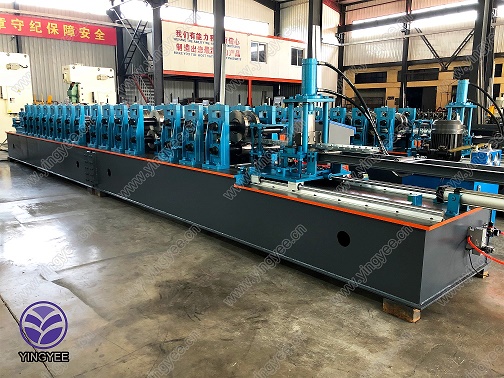
Understanding W Beam Guard Rails Roll Forming Machines
In the realm of highway safety, W beam guard rails play a crucial role in protecting motorists and preventing accidents. These guard rails are designed to absorb the impact of vehicles, redirecting them safely back onto the road and minimizing damage. The manufacturing process of W beam guard rails involves specific technologies, one of which is the roll forming machine. This article delves into the significance of W beam guard rails and the function of roll forming machines in their production.
What is a W Beam Guard Rail?
A W beam guard rail is a type of roadside barrier that features a 'W' shape when viewed in cross-section. This design provides enhanced strength and flexibility, making it particularly effective in absorbing impact. The rails are typically made of high-strength steel and are galvanized to resist corrosion, ensuring a long lifespan despite exposure to the elements.
W beam guard rails are commonly used in various traffic environments, including highways, urban roads, and rural areas. Their primary purpose is to protect vehicles from roadside hazards such as trees, ditches, and other obstacles. Additionally, they help in maintaining the control of vehicles during collision events, reducing the severity of accidents.
The Importance of Roll Forming in Manufacturing Guard Rails
Roll forming is a continuous process of shaping metal sheets into specific profiles through a series of rollers. This method is particularly suited for producing long lengths of guard rails, which are essential for ensuring uninterrupted protection along stretches of highway. Roll forming machines are engineered to create standardized profiles while maintaining tight tolerances, which is crucial for safety applications.
A roll forming machine for W beam guard rails typically consists of several key components, including
1. Feeding Section This is where the raw material, usually in coil form, is loaded into the machine. The material is unwound and fed into the forming section uniformly.

2. Roll Forming Stations These stations contain a series of specially designed rollers that gradually shape the metal into the desired profile. Each roller applies a slight pressure, modifying the shape progressively until the final W beam shape is achieved.
3. Cutting Section Once the desired length of the rail is formed, it moves to the cutting section where it is cut to size. Automated systems ensure precision and efficiency in this step.
4. Control System Modern roll forming machines are equipped with advanced control systems that monitor the forming process, ensuring consistency and quality throughout production.
5. Stacking and Packaging Unit After cutting, the finished guard rails are stacked and prepared for packaging and delivery, ready to be installed at various locations.
Advantages of Using Roll Forming Machines
The adoption of roll forming technology in the manufacturing of W beam guard rails comes with several advantages. Firstly, roll forming allows for high production efficiency, providing continuous output that meets large scale demands. Secondly, the process produces parts with high accuracy, which is vital for ensuring that guard rails meet safety standards and regulations.
Furthermore, roll forming uses less material compared to traditional methods like bending or welding, reducing waste and overall production costs. This efficient use of resources also has a positive environmental impact.
Conclusion
W beam guard rails are essential for ensuring road safety, significantly reducing the risk of severe accidents on highways and roads. The roll forming machine plays an indispensable role in the production of these crucial components, ensuring they are manufactured with precision and efficiency. As technology continues to improve, roll forming machines will likely evolve, providing even better solutions for highway safety and the production of high-quality guard rails. The future of road safety continues to rely on innovative manufacturing techniques, making the role of roll forming in producing W beam guard rails more critical than ever.